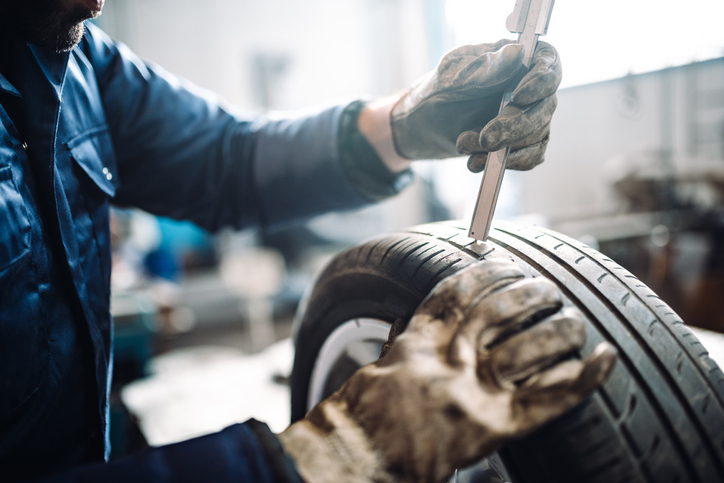Road Trip Safety Tips
Check Tread Depth
Evaluate the tread depth of your tires to make sure you have enough traction to grip the road. The penny test is a simple way to do this. Just place a penny upside down in your tread. If you can see the top of Lincoln’s head, it may be time for new tires.Check Tire Pressure
Use a tire pressure gauge to make sure your tires are properly inflated and then fill your tires with air as needed. To check your pressure, remove the valve stem cap, press the gauge head evenly onto the valve stem, use firm pressure so that the hissing sound stops. Remove the gauge and read the pressure. Compare this to your vehicle’s recommended inflation pressure. Always check your tires while they are cold (after sitting for at least 3 hours or before you’ve driven 1 mile at moderate speed). Never bleed pressure from a hot tire.
Check Tire Condition and Age
In addition to tread depth and inflation pressure, you should also inspect your tires for any damage or conditions that would warrant their replacement. Look at the tread and sidewalls for any cuts, scrapes, punctures, bulges, bumps or cracks. If you see anything suspicious, have a tire service professional take a closer look.
You also want to keep an eye on your tire’s age. Depending on how much you drive each year, your tire’s tread may last for years but just because the tread is not worn out does not mean that your tires don’t need to be replaced. Bridgestone, following industry standards, recommends that tires be removed from service no more than ten (10) years after the date of manufacture.
To determine your tires age just look at the DOT stamping on the sidewall. At the end of the DOT stamping there will be a 4-digit number. This is the date code. The first two numbers are the week and the last two are the year. For example, 4617 would tell you that the tire was manufactured the 46th week of 2017.
Evaluate Your Oil
After fuel, oil is your vehicle’s most important fluid, and it gets worn and dirty during its lifecycle. Regularly scheduled oil changes will help keep your engine clean and avoid the potentially engine-damaging effects contaminated oil can inflict. If you want to maximize engine performance, and most importantly, engine life, don’t skimp on your engine’s most vital lubricant. Skipping oil changes, exceeding mileage or going long periods of time before your next oil change can accelerate the wear on the vital parts that keep your car running smoothly, eventually leading to premature engine breakdown.
Want More Road Trip Safety Tips?
Check out Bridgestone's road trip safety tips to learn more about prepping your car for travel.







